Average sizes and life expectancy for this breed:
French Bulldogs have relished a long history as loving canine companions. They were first bred in England as a miniature ‘toy’ version of the English Bulldog. In the 19th century, they regularly escorted English lacemakers to France, where they got their “Frenchie” signature.
This dog breed has a unique appeal. They are not what you would call ‘traditionally attractive’, but they have a distinct charm that has made them incredibly popular as pets and companions around the world.
The French Bulldog is small but extensive in its build, with a sturdy, muscular body. They sport a short, low maintenance coat that perfectly complements their easygoing and laidback personalities. Frenchie's, as they are affectionately known, love to play but they also enjoy spending their days relaxing on the sofa.
French Bulldogs are affectionate canine companions who thrive in the company of humans. If you want an outdoor dog breed that can be left alone for long periods, this dog breed is not for you. Frenchies enjoy smothering love and attention on their human companions every minute of the day. They commonly get along great with everyone, including kids. However, they can be very possessive and territorial of their family, especially when there is another dog present.
With a character that is both comical and playful, French Bulldogs need to be with someone dependable, stable, and patient in dealing with all their silly antics and quirks that make them both challenging and delightful.
French Bulldogs make outstanding watchdogs. They will alert their family to approaching strangers and protect them if necessary.
See available puppies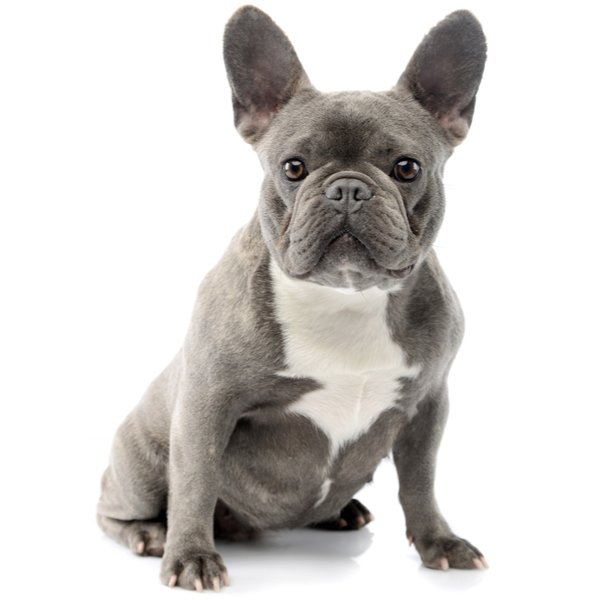

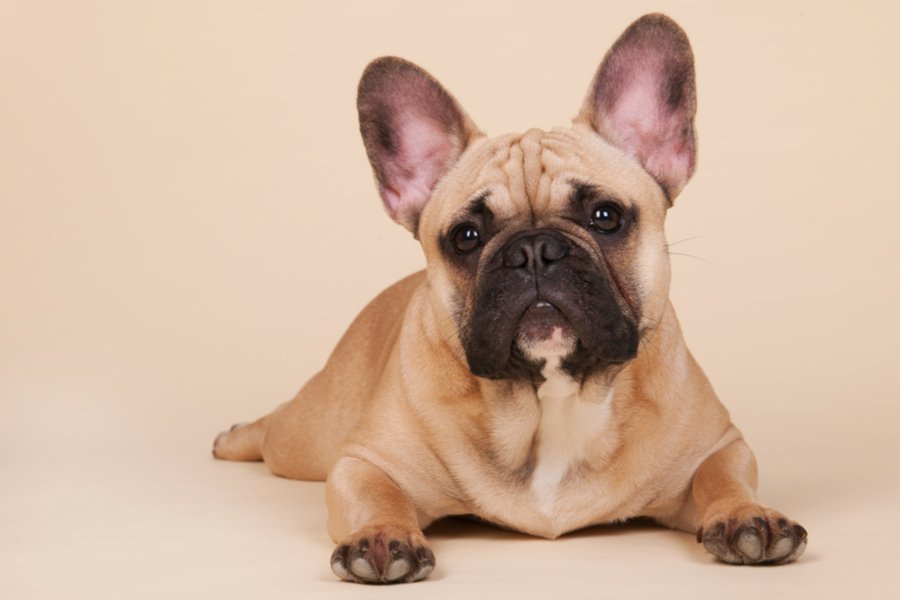


The French Bulldog was created and bred to be a toy-size version of the Bulldog in the early 1800s, after bull-baiting and other forms of animal fighting were banned. The breed originated in England where it became incredibly popular with lace workers in Nottingham. When many lace workers emigrated to France for a better life, they took their little bulldogs with them. What is still a mystery, is the breeds that were crossed with English Bulldogs. One theory is that the ‘toy’ Bulldogs brought over from England, were bred with local Parisian ratter dog breeds to create the characteristic bat-eared French Bulldog we know today.
During the late 18th century, French Bulldogs were primarily owned by Parisian market porters, coachmen, and butchers. However, due to their unique appearance and character, they shortly won the hearts of high society and the artistic world, particularly with ‘ladies of the evening’. In fact, these dogs appeared regularly on postcards alongside scantily dressed mistresses throughout the late 18th and early 19th centuries.
In 1880, the first breed club was formed in Paris and in 1898, the first breed standard was established. This is also the same year that the French Kennel Club recognized the breed.
The French Bulldog thrived in France and Europe. Because of their charm, they were soon discovered by Americans too. In 1896, the United States saw the first French Bulldog at the Westminster Kennel Club show. The French Bulldog Club of America (FBDCA) was founded in 1897 when the ‘bat-eared’ look became a staple of the breed.
However, at that time in England, rose-eared toy Bulldogs and ‘bat-eared’ French Bulldogs were still considered to be the same breed. It wasn’t until the latter was accepted by the Kennel Club in 1903 as the Bouledogue Français, that the two breeds became distinct in their own right. In 1912, the name ‘French Bulldog’ was officially accepted. However, the toy Bulldogs slowly dwindled until they became extinct.
The breed standard has been constantly updated since then, with more colours considered acceptable over the years. Today, these affectionate dogs are the second most popular breed in the United Kingdom and worldwide, thanks to their lovable appearance and endearing nature.

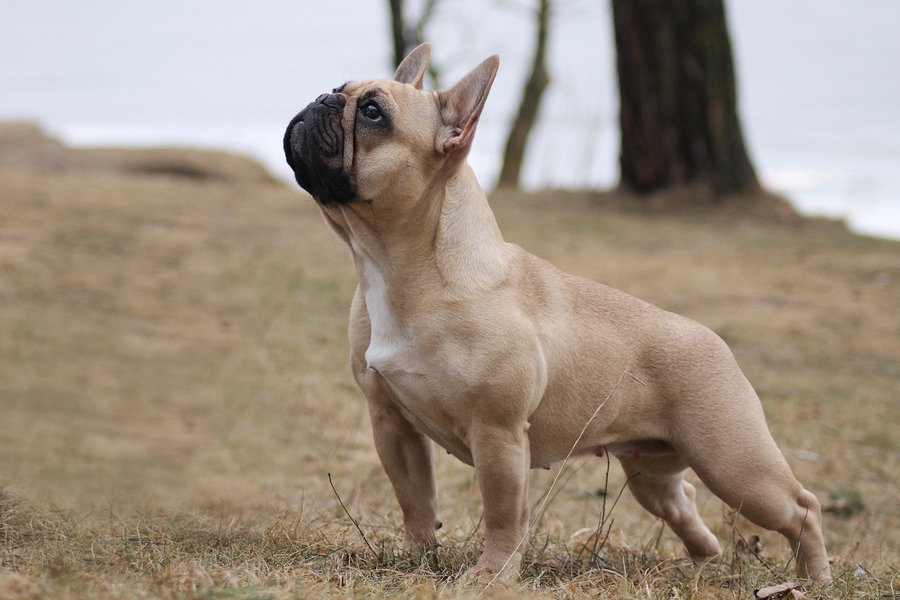
French Bulldogs are sturdy, compact, stocky little dogs with large square heads and distinct wrinkling on their short noses. Their broad muzzles are deep with a well-defined stop. Their nose is black, but it may be lighter in lighter coloured dogs. Their upper lips hang down over the lower lips, so their teeth meet in an underbite with a square and deep lower jaw. The round, dark, prominent eyes are set wide apart and their bat ears stand erect; wide at the base and narrowing in a rounded triangular shape at the tips. Their tail is either straight or cork-screw. Lastly, their chest is broad and deep, with the front of the dog being wider than the back end, forming a pear shape.
Their short coat is smooth and fine in texture and lies close to the body. The only accepted colours according to the UK Kennel Club are fawn, pied, brindle, and brindle-pied. All other colours such as black and white, solid black, mouse, black and tan, liver/chocolate, and grey/blue, are highly undesirable.
The French Bulldog is a joyful, easy-going companion that is playful, alert, and affectionate. They are also enthusiastic and lively but not overly yappy. They have very goofy personalities and love to clown around. Frenchie’s generally get along well with strangers and other animals. However, their favourite place is with their owners.
French Bulldogs are ideal companions for people who either work from home or in households where someone is home for most of the day because these dogs thrive on human contact. They don’t do well when left alone for long periods as they are prone to developing separation anxiety.
They are also an excellent choice for people who live in small homes and apartments because of their small size and laid-back attitude.
Furthermore, the French Bulldog is an ideal choice of pet for people who enjoy the quiet life. These dogs will happily curl up on the couch with you for hours and seek cuddles every moment of the day. They are not overly active, but they do enjoy a good family game every now and then.
Keep in mind, that these adorable little dogs need to be given regular daily exercise. Around one hour a day split into short 15-minute walks is ideal. Otherwise, they can quickly pile on the pounds.
French Bulldog lovers often describe their companions as mischievous goofballs that they cannot envision their life without. These dogs will love you with all of their strength.
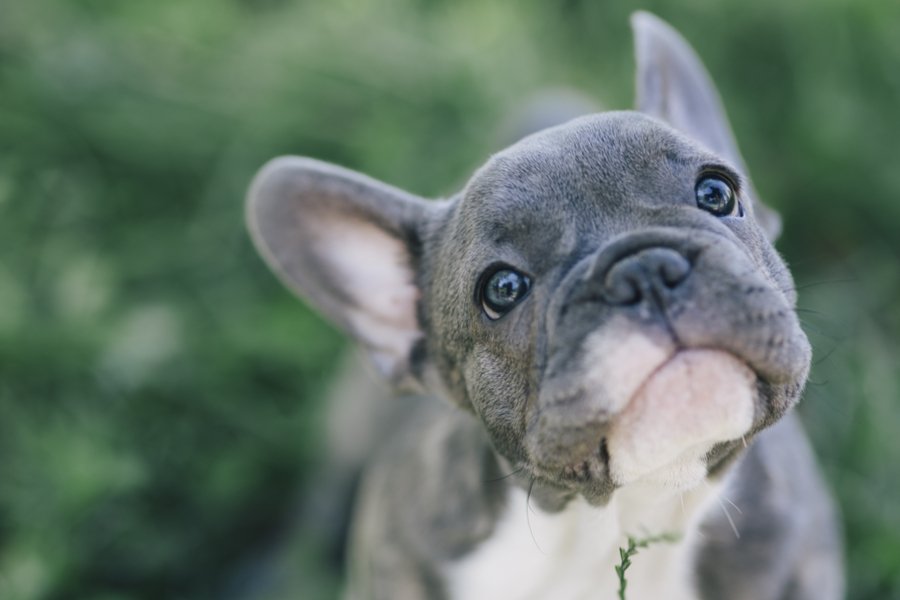
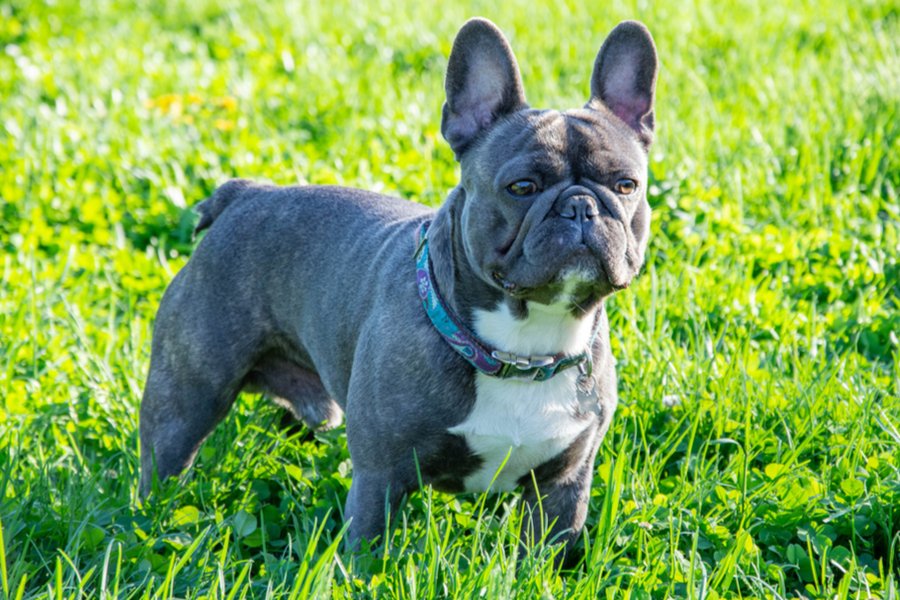
French Bulldogs are not believed to be the most intelligent dog breed, but this could be down to their stubborn natures. When training a French Bulldog, patience and consistency are key. Make training fun by incorporating games and cuddles to keep your pup's interest and move slowly with short training sessions. While they may not be the easiest dog to train, these ‘clowns of the canine world’ will surely keep you entertained.
Moreover, positive reinforcement training is important for this dog breed. Just make sure to monitor the number of rewards you give your Frenchie during training because they are prone to weight gain, especially when they are young. Remember, bearing too much weight puts extra pressure on your Frenchie's growing joints which can lead to bone disorders and malformities.
Early socialization and training classes are recommended for French Bulldogs. Expose your Frenchie puppy to a wide variety of people, places, and environments to help them develop into well-adjusted, well-rounded, and well-mannered adults. Puppy training classes are a vital part of the socialization process to promote good behaviour, and help owners learn to identify and correct bad habits.
Frenchies have big personalities and can require a fair amount of training. They can be stubborn, but at heart, they are people pleasers. With the proper motivation, you can encourage your little French Bulldog to enjoy training which will further increase the human-animal bond between you.
The smooth, short-haired coat of a French Bulldog is easy to groom. Use a firm bristle brush once a week to remove any dead hair. You should also bathe them once every 1-2 months but make sure not to bathe them too often as this can remove the natural skin oils and cause the skin to dry out. In addition, you can rub them down with a piece of towelling or chamois to keep their coat shiny and healthy-looking.
Clean their ears frequently with a moistened, warm cloth, and run a cotton swab around the canal's edge. Do not stick the cotton swab into their ear canal. If the borders of their ears are dry, you can apply a small amount of mineral or baby oil.
This dog breed does not naturally wear their nails down so they may need trimming frequently. This will avoid splitting and tearing, which can be painful for your dog.
Clean your Frenchie’s teeth by brushing them at least two or three times a week to remove tartar and bacteria buildup. Ideally, daily brushing is best to avoid tooth and gum disease.
Lastly, make sure to inspect their body parts for sores, rashes, or any signs of infection such as swelling, tenderness, or redness on their eyes, ears, nose, mouth, skin, and feet. Their eyes must be clear and with no discharge or redness.
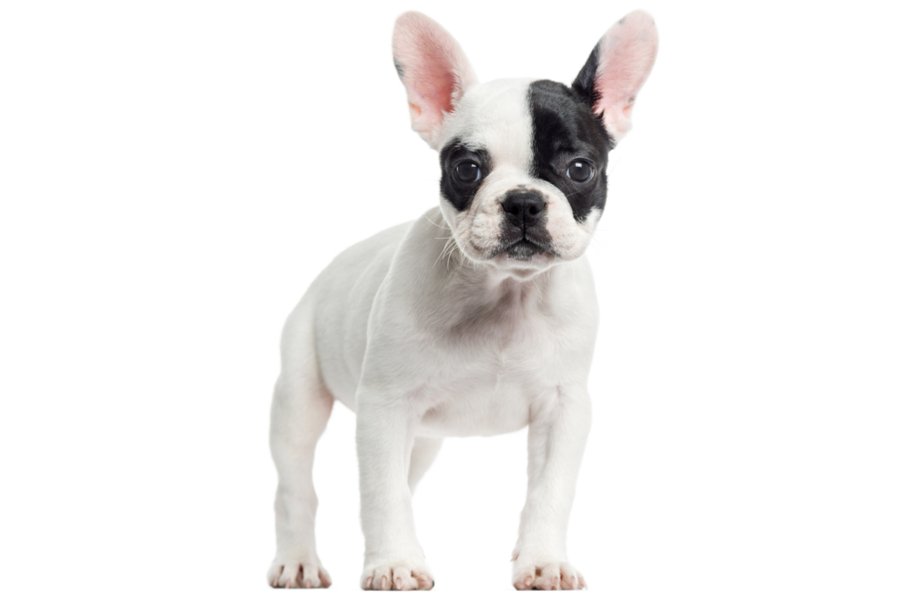

A French Bulldog's average life expectancy is 9-12 years when correctly cared for and provided with an excellent quality diet that is suitable for their age and needs.
However, there are particular genetic and congenital health issues that this dog breed is known to suffer from. For this reason, it’s vital that you only purchase French Bulldog puppies from trustworthy and licensed breeders. They will be able to perform DNA tests to detect any underlying health issues.
The main health concerns that affect French Bulldogs include:
French Bulldogs get along great with children of all ages. That being said, no dog should ever be left alone with a young child. It’s always best to supervise all interactions to ensure that neither is harming or harassing the other.
It’s also essential to take things slowly when your Frenchie meets another dog for the first time, to prevent aggressive or territorial behaviours. French Bulldogs can quickly get jealous if another dog is getting attention from their human.
If a French Bulldog has grown up with a family cat, they usually form strong bonds with each other. However, they are more likely to chase cats they aren’t familiar with. Ensure your French Bulldog is appropriately socialised as a puppy to prevent any domineering traits from developing. If this is done correctly, most French Bulldogs will tolerate other pets well.


We can connect you with Breeders that are specialized in this particular breed.
See available puppies

Need some advice?
Whether you're a first time pet owner, an experienced pet owner, a new or long-time breeder, or just curious about pets, we've got you covered!

January 17, 2024
What Is The Personality Of Russian Blue Cats?
Russian Blue cats are most known for their distinctive shimmery blue-silver coat and piercing green eyes. However, this breed’s calm and gentle temperament is what makes them shine the most in the feline world.

January 17, 2024
10 Facts About Russian Blue Cat Breed
Russian Blues are one of the most aesthetically stunning cat breeds, with a gorgeous plush silvery coat and vibrant green eyes. However, it’s not only their appearance that is beautiful; their nature is too.

January 17, 2024
How To Choose The Right Cat Breed for You
Cats can make the most fantastic animal companions; they are adorable, friendly, and loving. However, not all felines are created equal. There are many different breeds, of which each has its unique personality traits.
Need some help?
Contact us to speak to our friendly advisor, who will gladly help you find your dream pet!



We are registered in England and Wales under registration number 12568840,
and our registered office is at 58-60 Kensington Church Street, W8 4DB London, England.
© 2023 The Pedigree Paws